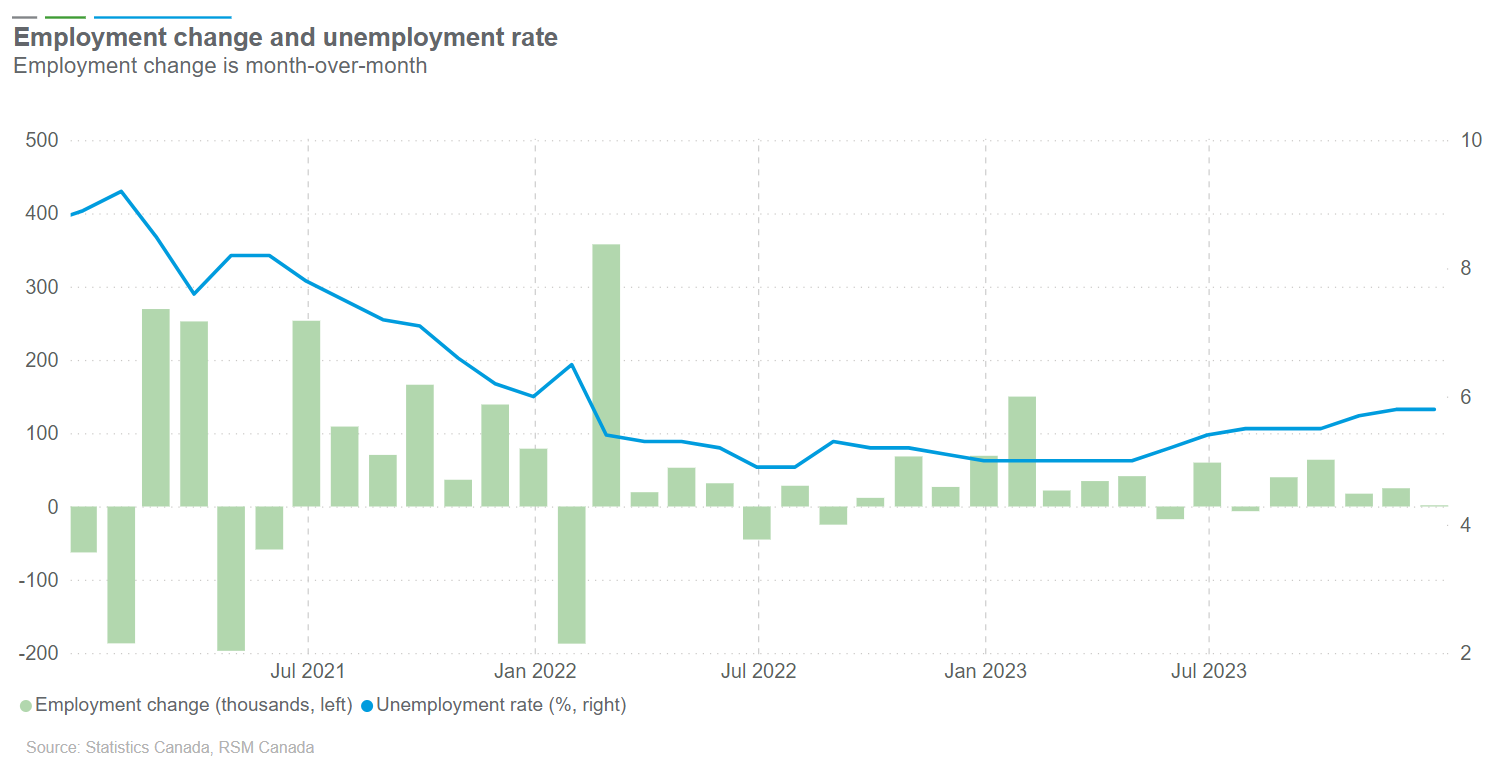The Canadian economy is facing challenges as it slips into no-growth territory. In December, Canada lost 23,500 full-time jobs, which were replaced by a gain of 23,600 part-time positions. This shift in employment dynamics is a concerning sign for the overall health of the economy.
Despite the mixed signals that dominated the latter half of last year, there are still no unanimous signs of a stalling economy. The unemployment rate remained steady at 5.8%, but underemployment is undermining both economic growth and productivity gains. Underemployment occurs when individuals are working in positions that do not fully utilize their skills and abilities, leading to lower productivity levels.
One factor contributing to the lack of job growth is the slower pace of immigration during the winter months. This has prevented the unemployment rate from rising, but it has not addressed the underlying issue of stagnant job creation. The weaker-than-expected jobs report released by Statistics Canada may prompt the Bank of Canada to consider reducing interest rates to stimulate economic growth.
However, the hot wage growth of 5.4% is a cause for concern, as it is significantly higher than the inflation rate of 3.1%. This could lead to sticky inflation, where prices continue to rise despite efforts to control them. A rate cut in the second quarter may be necessary to prevent a deeper economic downturn.
While the American economy continues to add jobs and is on track for expansion, Canada is experiencing modest job growth in the first half of the year. The rise in part-time positions and the increase in app-based ride or delivery services indicate a trend of underemployment, where workers are not fully utilizing their skills and potential.
The labour force participation rate fell to 65.4%, the lowest of the year, driven by a drop in youth employment. However, the participation rate among core-aged workers remained high at 88.7%. The goods-producing sector lost jobs, while the services-producing sector saw an increase, particularly in professional, scientific, and technical services.
Health care also added jobs, which is a positive development given the ongoing shortage of talent in the healthcare industry. The strike in Quebec in December resulted in fewer hours worked among public-sector employees, further impacting employment numbers.
Throughout last year, employment among core-aged workers declined, largely due to population growth from immigration. The employment rate among core-aged women and men also saw a decrease from the beginning to the end of the year.
In the months ahead, it is expected that the unemployment rate will rise as businesses face pressure from high interest rates and are forced to cut expenses. Economic challenges will persist until the Bank of Canada takes action to reduce the policy rate in the second quarter. This adjustment may help stimulate job growth and economic activity, providing relief to businesses and workers alike.




















